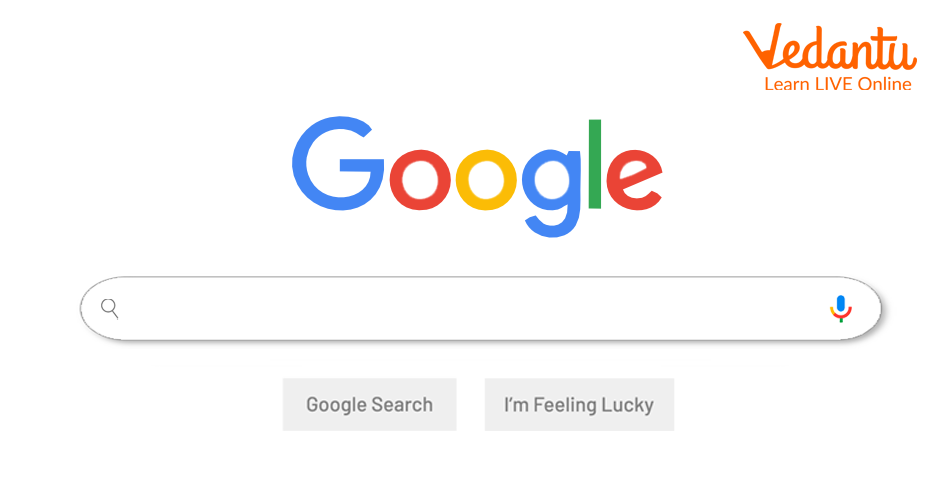




How to Define the Internet?
The Internet is a system of networked computers that communicate and share information using a set of Internet Protocols that have been established. The Internet has fundamentally changed communication and technology throughout the globe.
There are billions of computers and other electronic devices connected to the Internet on a worldwide scale.
You can speak with anybody in the world, access nearly any information, and accomplish a lot more with the help of the Internet. By getting online, or connecting a computer to the Internet, you may accomplish all of these tasks.
One of the computer networks that was built over a broad region of land is known as a WAN. The Internet is the best WAN example (Wide Area Network).

Global Internet Connection Representation.
History of the Internet
The first form of the internet was established in 1969 and was named ARPANET. It was developed by the Advanced Research Projects Agency (APRA) of the Department of Defense, U.S.
The next stage was to commercialize its use and to make transistors and transmitters fit in smaller devices so that the general people could use the Internet easily. The 1970s saw the introduction of this.
Moving ahead, the primary focus was on satellites and wireless communication.
The need for commercial Internet use expanded as personal computers were developed. During this period, Ethernet and other Local Area Networks began to gain popularity in the late ’80s and early ’90s.
In 1993, the web browser was introduced.
Then, in the twenty-first century, consumers have access to a combination of technology and wireless Internet.
Benefits and Features of the Internet
An online Education Platform:
Even adults and kids want to learn new things thanks to advancements in technology, and access to learning resources on numerous internet portals has increased.

Online Education Illustration.
Electronic Mail/Email:

Email Illustration
Search:
on the internet, you may get information on everything and anything. The internet makes it simple to obtain information on a variety of topics and learn new things at any time.

Google Search Bar
Employment Opportunities:
On the internet, employers may hunt for employees, while job seekers can submit online applications for positions.
Banking:
You can monitor the status of your bank account online. Money can also be moved from one account to another with the help of the internet.

Online Banking Illustration
Disadvantages of the Internet:
Increased Dependency:
Since the advent of the Internet and its widespread availability, people's reliance on searching for items and information online has significantly expanded.
Time Wastage:
Anyone who spends a lot of time using Internet-connected gadgets runs the risk of developing an Internet addiction. A person who develops an internet addiction may wind up wasting valuable time online.
Cybercrime:
People use the internet for more than simply studying; because of the easy access to resources, cybercrime has reached a record level.
Summary:
The Internet is a system of networked computers that communicate and share information using a set of Internet Protocols that have been established. The first form of the internet was established in 1969 and was named ARPANET. It was developed by the Advanced Research Projects Agency (APRA) of the Department of Defense, U.S.
In 1993, the web browser was introduced. The internet has various features and benefits such as online banking, email, increased connectivity, online education platform, etc.
The major cons of the internet include: cyberbullying, increased cybercrime, distraction, addiction to the internet, time wastage, and increased dependency.
Practice Questions:
1. Which of the following is not a feature of the internet
Email
Online banking
Social media
Improved Health
2. When was the first form of the internet introduced
1980
1993
1969
3. Internet has led to an increase in the number of
Cybercrimes
Healthcare
Reduced poor people
Solved Questions
1. Define the internet
Ans: The Internet is a system of networked computers that communicate and share information using a set of Internet Protocols that have been established. There are billions of computers connected to the Internet on a worldwide scale. You can speak with anybody in the world, access nearly any information, and accomplish a lot more with the help of the Internet.
2. Name 3 disadvantages and advantages of the internet
Ans:
Disadvantages of the internet:
Cyberbullying
Cybercrime
Distraction and time wastage
Advantages of the internet include:
Online Education
Online banking
Email
3. When was the internet established?
Ans: The first form of the internet was established in 1969 and was named ARPANET. It was developed by the Advanced Research Projects Agency (APRA) of the Department of Defense, U.S.
FAQs on Internet
1. What is the Internet?
The Internet is a massive, global system of interconnected computer networks. It uses a standardised set of communication protocols, known as the TCP/IP suite, to link billions of devices worldwide. It allows users to share information, communicate with each other, and access a vast range of resources and services.
2. What are the main uses of the Internet in daily life?
The Internet has numerous applications that are integral to modern life. Key uses include:
- Communication: Using services like email, instant messaging, and video calls.
- Information Access: Searching for information on any topic using search engines like Google.
- Education: Accessing online courses, research materials, and e-learning platforms.
- E-commerce: Buying and selling goods and services online.
- Entertainment: Streaming videos, music, playing online games, and using social media.
- Online Banking: Managing bank accounts, transferring funds, and paying bills.
3. What are the different types of Internet connections available?
There are several ways to connect to the Internet, each with different speeds and technologies. Common types include:
- Dial-up: An older, slower method using a telephone line.
- DSL (Digital Subscriber Line): Uses existing telephone lines but offers much higher speeds than dial-up.
- Cable: Provides high-speed internet through the same coaxial cables used for cable TV.
- Fibre Optic: The fastest type, transmitting data as pulses of light through fibre optic cables.
- Satellite: Useful in remote areas where other connections are unavailable, using a satellite dish.
- Mobile Internet: Accessing the internet via cellular networks (e.g., 4G, 5G) on smartphones and other mobile devices.
4. What was ARPANET and what was its role in the development of the Internet?
ARPANET, which stands for the Advanced Research Projects Agency Network, was a pioneering computer network established in 1969 by the U.S. Department of Defense. It is considered the forerunner of the modern Internet. Its primary purpose was to create a decentralized network that could withstand a partial outage, which led to the development of the foundational TCP/IP protocols that the Internet still uses today.
5. What are some key disadvantages or risks associated with using the Internet?
While the Internet is incredibly useful, it also presents several risks. The main disadvantages include:
- Cybercrime: The risk of viruses, malware, phishing scams, and theft of personal information.
- Misinformation: The rapid spread of false or inaccurate information.
- Cyberbullying: Harassment or bullying that takes place online.
- Addiction and Time Wastage: Spending excessive amounts of time online, which can affect productivity and well-being.
- Privacy Concerns: The collection and potential misuse of personal data by websites and companies.
6. How is the Internet different from the World Wide Web (WWW)?
The Internet and the World Wide Web are often used interchangeably, but they are not the same thing. The Internet is the global network of physical computers, servers, and cables—the infrastructure. The World Wide Web (WWW), or simply "the web," is a service that runs on top of the Internet. The web is a system of interlinked documents and resources, accessed via URLs and displayed on web browsers using protocols like HTTP. Think of the Internet as the road system and the web as the cars and buildings alongside it.
7. Why is the TCP/IP protocol suite considered the backbone of the Internet?
The TCP/IP suite is fundamental because it provides the rules and procedures for how data is transmitted and received across the Internet. TCP (Transmission Control Protocol) is responsible for breaking down data into smaller packets before they are sent and reassembling them in the correct order at their destination. IP (Internet Protocol) is responsible for addressing these packets and routing them to the correct destination across different networks. Without this reliable, standardized system, communication between billions of diverse devices would not be possible.
8. How does a web browser work with the Internet to display a webpage?
A web browser is an application software used to access information on the World Wide Web. When you enter a web address (URL) into a browser, it sends a request over the Internet to a server where the website's files are stored. The server then sends the requested data (HTML, CSS, JavaScript files) back to your browser. The browser interprets these files and renders them as a visual webpage that you can interact with. The browser acts as the client, and the Internet provides the connection to the server.
9. How has the Internet transformed modern education and learning for students?
The Internet has revolutionized education by providing unprecedented access to information and learning resources. Students can now:
- Access a vast library of information through search engines and academic databases.
- Participate in online courses and virtual classrooms from anywhere in the world.
- Collaborate with peers on projects using online tools.
- Use interactive educational platforms, simulations, and videos to understand complex topics.
- Get instant help and clarification on subjects through educational websites, aligning with the CBSE 2025-26 syllabus.
10. What is a Wide Area Network (WAN), and why is the Internet the largest example of a WAN?
A Wide Area Network (WAN) is a computer network that spans a large geographical area, such as a city, country, or even the entire globe. It connects multiple smaller networks like Local Area Networks (LANs). The Internet is the ultimate example of a WAN because it is a global network that connects billions of computers and smaller networks across every continent, making it the largest WAN in existence.





















